人教版新目标初中英语八年级下册Will people have robots说课稿9篇
-
- 页数:27页
- 字数:约 26924 字
- 大小:170.00KB
- 格式:.doc
- 版本:Office2016及以上版本
- 作者:二十四设计
Will people have robots说课稿9篇
Will people have robots? 第一课时说课稿
一、教材分析
1、教材的地位及作用
本单元是八年级(下)第一单元,涉及的主要话题是预测未来、一般将来时的表达方法并学会谈论过去、现在和未来。通过语言的学习,掌握will/won’t的用法及一般将来时的表达方法,了解shall/shan’t的用法。

本课为本单元第一课时,主要涉及到will/won’t用法的引入、操练以及运用一般将来时完成任务,在本单元处于重要的位置。
2、本课教学目标设计
知识目标:1. 复习there be句型
2.掌握will/won’t的用法及一般将来时的表达方法
能力目标:1. 预测未来
2.学会陈述表达各自观点
情感目标:教育学生要热爱生活、热爱社会,为社会发展尽自己一份力
3、教学重点、难点
重点:1. 掌握will/won’t的用法
2. 学会一般将来时的表达方法
难点:运用一般将来时完成任务
二、教学方式与教学手段
1、任务型语言教学:通过适当的操练使学生掌握基本的句型结构;通过引导学生分析、归纳、总结,更好的理解新语言,培养科学的思维方法;通过设计任务,促进学生的交际能力,从而达到巩固语言知识的目的;但讲解和口头操练之后,强调在笔头上进行体现,从而达到全方位掌握语言的目的。
2、情境教学法:通过图片、PPT、影片、音乐和录音达到对学生的多感官刺激。
三、教学设计
主要通过知识导入、情景演练、巩固运用、反馈练习、小结以及作业布置六程序完成本节课。
教学环节
教学程序
设计意图
知识导入
1、出示机器人图片。
引入生词robot. 图片新颖,激发学生学习兴趣,使学生轻松进入英语学习。
2、播放影片,让学生讨论所给问题。引入“将来”,导入新课。
1、影片生动、形象,富有感染力,既活跃了课堂气氛,又调动了学生学习的积极性,从一开始就吸引了学生,引导学生自主学习。
2、通过两个讨论问题的创设,使学生自然想到用语言表达将来,增强了学习一般将来时的渴望。
情景演练
借助图片演练句型there will be,引出含有will的句子,让学生自己归纳总结一般将来时的各种基本句型。
这部分给学生提供了观察和归纳的平台:通过观察与思考,最终发现新句型的结构特征,这样学生对这语法体会深刻,记忆深刻。
巩固运用
1、出示句子,让学生读、翻译,并讨论将来世界将会变成什么样。
旨在通过学生自己读、翻译,进一步增强他们对will/won’t用法的理解记忆。同时也为听力练习作了铺垫。
2、1b:放录音,让学生圈出所听到的信息
听力练习对于新知识的掌握是必需的,有助于加强多感官、多形式的刺激,更好的掌握语言,感知语言。
3、拓展练习。让学生看短片,根据视觉信息,写出自己对未来生活的预测。
这是一个小组活动,此段英语短片不仅具有趣味性,而且引人深思。因此,安排这一活动旨在发散学生思维,进一步强化学生的合作能力及对目标语言的理解与运用。
反馈练习
1、根据本课中所出现的重点词汇,安排了四个根据句意和首字母填空。
给予学生在具体语境中利用所学词汇解决实际问题机会,既便于记忆单词,又便于强化知识点。
2、安排一个用will/won’t完成对话的练习。
强化学生对语法知识点的理解,培养学生在英语会话中语言点的实际运用能力。
小结
让学生总结本课的重点,然后出示幻灯片,展示本课重点。
强调本课重点,再次巩固语法知识记忆。
作业布置
1. Make sentences with “ will/won’t ”.
2.Write a short report to talk about the future.
巩固课堂所学知识。
本课以素质教育为目的,结合教材重点、难点及英语学科特点,利用任务型教学法,借助声音、图片、影像资料等辅助教学工具,使学生在听、说、读、写等方面得到了锻炼,在轻松、愉悦的氛围中获得新知识,达到初步运用英语交际的能力。可能许多地方还需完善,敬请专家们多提宝贵意见和建议。
Will people have robots? 第一课时说课稿二
一、教材分析及学情分析:
在英语教学中,一个单元是一个不可分割的整体,因而我们在分析处理教材时要从整体上把握。依据任务型教学理念,我们可试先找出本单元中每个课时的中心话题或任务是什么,然后围绕这个中心话题或任务展开任务型教学。如Unit 1中第一课时的中心话题是: Will------?句型及其肯定或否定的回答。
本节课围绕一般将来时态展开讨论。运用教学卡片,实施任务型教学,提高了学生学习英语的趣味性,有助于培养其用英语思维的学习习惯。
二、教学目标:
1、短语:have robots (computers, cars)in their homes, use money, kids
go to school, live to be 200 years old
2、话题: ---Will people/kids…?
---Yes, they will./ No, they won’t.
3、训练学生的听说演等能力。
4、培养学生的合作学习精神。
二、教学重点:
---Will people/kids…?
---Yes, they will./ No, they won’t.
四、教学难点:
几个介词的用法:in their homes,on computers/paper, in 100 years
五、教具:
卡片( 6张);录音机一台。
六、教学步骤:
Step1 New phrases learning
Show some cards in Chinese:家中有机器人、家中有电脑、家中有汽车、使用钱、活到达200岁、孩子们上学。
Help the students to learn the phrases: have robots (computers, cars)in their homes,use money, live to be 200 years old, kids go to school.
Read after the teacher the phrases, then read together.
Let the students speak out the phrases one by one according to the cards.
(出示卡片,学习短语,便于学生对短语的识记和理解;让学生一一根据卡片说出相应短语,能有效检验学习效果。这些为任务型教学的实施作好准备。)
工 Step 2Presentation
Write the dialogue on the blackboard:
A: Will people/kids------?
B: Yes, they will./ No, they won’t.
Point out: will+ 动词原形
(板书讨论主题,为开展学生活动做准备)
Step 3 Discussion
Let the students discuss the dialogue above in pairs for a few minutes.
If necessary, they can open the textbook of page 2,1a.
Step 4 Performance
Ask some pairs to perform in front, putting up the cards while they aremaking the dialogues.
( 以活动为中心的任务型教学,培养了学生的合作学习精神和一定的竞争意识;同时又让学生体验到学中有乐的快感,体现了以学生为主体的新课程观。)
Step 5 Check
Let the student make sentences one by one according to the cards.
One asks, the other answers. Just like these:
S1: Will people/kids------?
S2: Yes, they will./ No, they won’t.------
(一人接一人根据卡片进行问答,全面检验了学生的学习效果。)
Step6 Reading
S B. P2. 1a and 1c. Read the sentences and dialogues together.
Finish the exercise of 1a.
Check the answers.
Emphasize : in their homes,on computers/paper, in 100 years.
Step7 Listening
S B. P2. 1b. Give instructions about the listening exercise.
Listen to the tape about three times.
Check the answers.
Step 8 Homework
Memorize the new words and practice the sentences after class.
七、教学反思
本课培养了学生的英语听、说、运用等能力。把任务型教学与直观式教学融为一体,是本课的特点和优点。通过开展英语活动充分调动了学生学习的积极性,让他们感到学中有乐、乐于学。
Will people have robots? Section A说课稿
一、教学目标
1.敢于预测未来
2.学习一般将来时表达法
3.能谈论过去、现在和将来
二、教学向导
语言功能
对未来进行预测
陈述表达各自观点
语言结构
一般将来时,will的用法
用Yes/No做简短回答用more,less.fewer表达数量
学习策略与思维技巧
排列先后顺序
五、教学重点难点及突破
Section A
◆重点
由will构成的一般将来时态的句式,特别是there be 句式的一般将来时态there will be…。
◆难点
more,less,fewer的用法。
◆教学突破
使用不同的时间来训练与对比,由一般过去时态、一般现在时态而过渡到一般将来时态;根据模似的图片展示,引导学生通过一定量的口语交际,训练more,less,fewer的异同。There will be more/less/fewerpeople(leisure time,cars,pollution,trees…)
六、教学步骤
一、情境导入
1、师生口语随意性交际,涉及What’s the date today?What’s your name?Noyou like school?Do you like to do homework/housework?Do you want to live on themoon?等。
2.在黑板上写下四个日期:今天的日期,一年后的日期,五年后的日期,十年后的日期。
3.针对一年后的日期,向学生提问:What will be different in your life oneyear from now?如:Willyou be at this school in a year?Will you bein my class in a year?Will you livein this town in a year?等。
4.针对五年后的日期,向学生提问。
5.针对十后的日期,向学生提问。
6.写下学生不同的回答,并在will下用红色粉笔画线,以示强调学生注意。
二、教学环节
1.教师将时间延伸到未来100年,再来谈论100年后的情形。利用实物(如信用卡、纸币)或儿童玩具(玩器人)来呈现生词,领读生词。
2.朗读la中的六个句子,要求学生表明态度agree或disagree,巡视全班,以便给学生解疑。
3.指出学生不同的观点,并要求他们作简要阐述。
4.播放录音两遍,引导学生听力训练。
5.朗读lc中的对话,再读学生进行对话操练。
6.引导学生根据lc中的示范对话,进行自骗对话,如谈论书籍等。请学生分组对话,说出他产自编的对话内容。
7.播放2b的录音,要求学生圈出所听到的单词(more,less,fewer)。
8.在黑板上写下一些不可数名词和可数名词,引导学生使用more,less,fewer进行口语训练,提示这三个词的用法区别。领读2c中的对话,再引导学一进行课堂口语交际。
三、协作学习
1.呈现3a中Sally的图片,要求学生看图片并填出图片下的空格。
2.引导学生操练3a中对话。
3.要求学生write about themselves,填出3c中的空格。
4.要求学生画一幅虚拟的未来城市的图画,然后向同学们进行描述。
Will people have robots? SectionA 英文说课稿
Ladies and gentlemen:
Today, I am honored to have anopportunity to exchange ideas on this teaching material will people haverobots? My report is about, unit 1, of book 2 for grade 8 junior high school .Itis made up of 7 parts. They are teaching material analysis, student analysis,teaching objectives, teaching methods, teaching aids, teaching steps, and blackboarddesign..
Now let’s focus our attention on part1, teaching material analysis.
“Go for it!” is characteristic ofnative use of language, and it is task-based. With the help of “EnglishCurriculum Standards”, the study procedures of “Go for it!” are arranged stepby step and the contents are very close to real life. It also embodies severalinnovative ideas for teaching, with its emphasis on knowledge structure andapplication, language communicative function, and cultural backgroundinformation.
The title of this unit is “Will peoplehave robots?” In this unit, it contains section A and section B. Today I will teach section A.
Next comes the second part, studentanalysis:
For the 8-grade students, their age isgenerally around 14. They are more curious about new things, so their interestsin learning are easier to be aroused. After one year’s study and practice underthe new course standard, they have had some basic knowledge of words, grammarand language structure and also, primary abilities of cooperation, and exploration.
The third part is teaching objectives.
According to the general descriptionabout the total objectives in English Curriculum Standards and the deep analysisabove, I put forward the following teaching objectives:
1. Knowledge objectives: master the keywords, and the key sentence structures.
2. Ability objectives: improve the fourskills, especially the speaking and listening skill; develop the ability ofthinking independently.
3. Moral objectives: stimulate Ss’motivation, establish self-confidence, cultivate their cooperative ability byarranging different kinds of activities
Part 4 Teaching methods
According to English CurriculumStandards and the advanced theories of teaching reform, through the analysisabove, I chose two teaching methods in this unit.
1).Task-based Language Teaching
It focuses on students’ completion ofthe different tasks in real situations, and students’ total involvement inorder to convey linguistic information and train their language applicationability. Thus, in this lesson, I will create some real situations eitheraccording to the book, so that the students can finish different tasks and geta better understanding of the target language.
2) .Communicative Approach
Students can learn to make predictions bycommunicating with each other in pairs or groups.
3).Audio-ligual Method
Using the computer to give students avideo and some listening materials, through this can increase students’interests and train their listening ability.
Part five Teaching aids
I will usemulti-media (PPT, video),making the class more lively and interesting.I will also use some traditional teaching aids, such as, blackboard, cards and chalks.
Part six Teaching steps
Now let’s go to the most importantpart-teaching procedures.
In order to realize the teachingprocess properly and efficiently, under the principle of“regard Ss as the corpus, and the teacher inspires forpredominance”, I will divide the teaching procedures into 5 steps
Step 1: Warm up (5mins)
At the beginning of the class, I will givethem a video to watch. This will be an exciting and important part. The videois employed to warm up the students, and can draw their attention.
After watching this video, I will askstudents what do they think people’s living will be like in the future.
Step 2: Learn the new words, and structures(15mins)
a).In order to check if students masterthe difference usage between fewer and less, I will make a match among students—show cards with different nouns to them and let them tell mewhich will be chosen .Those who can guess them fastest and best will berewarded.
b).Pairwork: students make a dialoguewith their partner about the predictions using the will structure. This taskwill also train students’ spoken English
Step 3: Practice (15mins)
a).Listening practice:students listen the tapes about section 2a and 2b carefully andgive their answers. Then I will give them the right answers.
b).Groupwork: students can communicatewith others about their own situation five years ago, today and in five years.This task can check if the students master the tense change.
Step 4: Summary the key points of thislesson.(5mins)
Step 5: Homework (5mins)
Let students draw a picture of the cityof the tomorrow, then describe it in their own words on paper
Part 7 Blackboard design
In my lesson, I will use both thetraditional and modern teaching aids and the blackboard design is like this.
New words
will
robot
building
New structures
Will there be…?
Yes, there is…?
No ,there isn’t…?
So this is my whole report. Thanks foryour attention.
Will people have robots? Section B第二课时说课稿
一、教材分析:
本节课是新目标英语(Goforit)八年级下册第一单元Section B的第二课时。在本单元中是一个基础阅读课时,为Self check 后的Reading部分奠定了基础,起着承上启下的作用。它是以小阅读的形式谈论如何使用一般将来时及让学生畅想十年以后或将来的生活。
二、教学目标:
1.知识目标:要求学生掌握以下词汇:fall in love with, go skating, looksmart, be able to, dress, at the weekends。
2.能力目标:培养学生阅读英语小短文的兴趣,提高他们的阅读水平和写作技巧。
3.情感目标:让学生爱上英语课堂活动,树立畅想未来生活的远大目标。
4.学习策略目标:设法使学生掌握英语的阅读方法进行交流,提高阅读能力和写作能力。
三、教学重难点:
掌握目标词汇,增强英语的阅读技巧和写作水平。
四、教学分析:
1.说教法:
1)任务型教学法:给学生三项任务,让学生使用一般将来时来完成这些任务。使他们在任务中学习英语。
2)交际教学法:学生可以通过俩俩对话,小组对话和全体参与等方法用一般将来时讨论未来生活。
2.学法
1)自主学习:这一节是阅读课,所以我指导学生在不同的要求下进行快速阅读和深层阅读,要求学生运用自主学习法从整体上把握课文,同时鼓励那些怕开口的同学,都参与到课堂的中,动手完成一些基础的学习任务,培养他们学习英语的信心,培养团结合作的精神。
2)合作学习:积极参与活动,相互交流,互帮互助,合作完成任务,培养团队精神,更好地掌握本课所学知识。
五、教学过程:
Step 1 Leading in(任务前导入和复习活动)
1.Greet the class
2.Askstudent’s “What do you think you will do in ten years ?”,then talk abouttogether.
Step 2 Revision
What will you be in 10 years?I will be an/a…
Where will you live? I will live in ….
How will you get there?I’ll get there by…
Get students talk about future.
Step 3 While-task(任务中活动)Readingcomprehension
SB Page 6 , 3a .
1.Show pictures and learn the new wordsand phrases.
fall—fellfall in lovewithalonepetparrotgo skatingsuit
be able toat theweekends
2.Ask students to read the passage for the first time and fill in the chartbelow. Then check the answers.
3.Screen the questions and get the students to read the passage again, find outthe right answers. Check the answers.
Where will Ming live in 10 years?
Where will he be in ten years?
What will he have?
What will he do?
What kind of clothes will he wear?
Where will he goon vacation?
4.Ask the students to try to translate the passage.
5.Read it together.
Step 4 Writing (3b) Playing a game :Who write it ?
“Just now, we learnt what Ming’s life will be likein ten years. What will your life be like in ten years? Now write aboutyourself.”
Let the students to write their own passage.
1.Get two students to write their passage on the blackboard.Move around to check the progress. Check the passage on the blackboard.
2.Put all the Ss’ paperstogether
3.Take turns reading thepaper .The other Ss guess who wrote it .
Step 5 Post-task(任务后活动)
SB Page 6 , Part 4 .
1.Read the questions below .
2.Ask two Ss to read thedialogue .
3.Answer the questions .
4.Pairwork. Get yourpartner’s answers .
5.Share a few Ss’conversations .
作业:
1. Read and translate the passage 3a.
2. Go over thewords in this unit .
六、板书设计:
Will people have robots ? Section B 3a
New words
fall—fellfall in lovewithalonepetparrotprobablygo skatingduring the weeklook smartsuitbe able todress sb casuallyat the weekends
七、教学评价与预测:
本课时的教学评价应该着眼于以下三个方面:
1. 学生在Group work 中是否能积极参与。
2. 学生对于think引导的宾语从句,能够主动运用
3.学生能够正确使用一般将来时。
本课时的教学预测是学生可能会以比较高的热情参与若干个小组讨论,而难点可能在于复杂句的表述上,学生会感觉拗口,不顺畅;另外就是运用think引导的宾语从句和一般将来时表达未来的生活理想。
Will people have robots?说课稿
一. 说教材
我说的是新目标英语(Go For It)八年级下册第一单元题目为Will people have robots?
下面我要分析一下教材的特点,教学的对象和理论。
教材特点:
这本教材采用任务型语言教学模式,融汇了多个话题,交际功能和语言结构,有明确的语言目标,语法结构和语篇输入。
教学对象:学生已有一定的知识储备,阅历和认知水平。学生七年级下册就学过一般将来时, 并掌握如何使用一般将来时来描述日常活动, 而且掌握了一些日常活动的短语, 有利于他们学习一般将来时的新句型。
教学理论:采用任务型教学模式,以一个话题为线索相对独立而不孤立。
二.教学目标分析
知识目标:学习新的单词和语法,学会如何做出预测,使用未来的时态,及运用句型will people …? Will there be …? Do you think there will…?
能力目标:学会运用的将来时态进行对话和问答及做出预测,使用more, less,fewer 等词进行交流。我这样做主要是想让学生做课堂的主人,同时培养他们掌握一些行之有效的学习方法,优化学习效果。
情感目标:使学生关注国际高科技的发展;能够看到事物的两面性,全面看待科技发展给我们带来的利弊,同时让学生学习上学会小组合作,爱上英语课堂活动,鼓励他们在课堂上进行合作交流。作为一名老师设法使学生掌握使用英语进行交流,学习积极参与班级活动,也是我的一个学习策略目标。
三.教学重点难点
重点:如何做出预测,使用未来的时态进行预测性的对话练习和相应句型的听力练习。
难点:使用more, less,fewer 等词进行交流和对某些单词、词组和长句理解及运用。
四.教学方法
1.认知法:在教学过程中重视学生新句型的理解和语言能力的培养
2.任务型教学法:我会给学生几项任务,让学生使用过去进行时来完成这些任务,使他们在任务中学习英语。
3.讨论法:学生可以通过俩俩对话或小组对话来掌握一般将来时的新句型
4.采用直观法.:我将导入播放机器人的视频,引起学生共鸣,激发学生学习兴趣。
在整个教学过程中我使用的教学用具是多媒体、黑板。
五.学法
1.引导学习:由我引导学生学习新的单词,语法和课文,不同的要求下完成对话和听力,并对学生反馈的问题精讲。
2.自主学习:要求学生运用自主学习法从整体上把握课文,同时鼓励那些怕开口的同学,都参与到课堂的中,完成一些基础的学习任务,培养他们学习英语的信心。
3.合作学习:积极参与活动,相互交流,互帮互助,合作完成任务,培养团队精神,更好地掌握本课所学知识。
六.教学过程
1. 导入新课:运用多媒体课件,播放有关机器人的视频和图片,引起学生共鸣,激发学生学习兴趣,边看边展示与课文相关的新单词“robot ,won’t , they’ll=they will,More,less,fewer ”和句型will people….?
步骤1--复习
给学生简单复习一般将来时的基本句型,抽学生对自己这个周末将想要做的事做一个表述,充分复习和巩固已学知识。
步骤2---引入
给学生介绍机器人,显示一些机器人的画面在屏幕上,并进行一些有关机器人的问答,激发学生学习兴趣。
2. 拓展练习:让学生运用课文的重要句型will….?进行预测性的对话练习和相应句型的听力练习。
步骤1---教授新课:
通过屏幕的展示和课本的结合运用教授新的词汇和句型。
步骤2---拓展练习:
通过布置任务的方式让学生运用课文的重要句型will….?进行预测性的对话练习和相应句型的听力练习,达到每个学生充分参与和加深记忆的效果。
步骤3--总结:在学生经过几个任务操练后,帮助他们利用板书总结今天所学重要词汇和句型。
七.作业
1.复习并记忆本课所学单词,句型,语法结构。
2.重复进行对话口语练习。
3.预习下次课将要学习的词汇及课文内容。
Board writing design:
Will people have robots?
Vocabularywill people have robots?
RobotsDo you think there will only be a country?
Less Will there be less pollution?
FewerWill there be fewer trees?
MoreWill there be more robots?
Will people have robots?说课稿二
尊敬的各位评委、老师:
大家好。我是来自我是来自江西师范大学的陈**,今天我说课的题目是新目标英语八年级下册Will people have robots ? 下面我将从背景说明、框架设计、评价设计三方面进行说课。
一.背景说明
[教材分析及处理]
1.教学内容
本单元围绕“对未来的预测进而提出自己的观点”这个话题展开教学。通过本单元的语言素材看图说话,句型操练;通过实际描述,表达,对话表演等语言功能操练,使学生描述人们对未来的预测和憧憬,达到英语交际的目的。
2【教学目标】
①知识与技能
掌握“预测未来”的表达
掌握“更多”“更少”的表达
比较英语动词一般过去时,一般现在时,一般将来时的用法。
②过程与方法
采用“任务型”教学模式,首先把本单元的学习任务布置给学生,让学生名确教学内容。然后帮助学生在形成主动的学习状态,产生学习欲望与动力。
同时根据不同阶段不同的学习任务,教师提供完成该项学习任务所需要的语言,再通过听力训练和句型操练,让学生掌握基本句型。
本单元第二课时主要以听力为主,第三课时集中词汇的教学,第四课时为单元复习课。
课时安排
第一课时:Section A 1a-1c
第二课时: Section A 2a-4b
第三课时:Section B 1a-4
第四课时: Self check
③情感态度与价值观
通过对未来的描述,调动学生的积极性,发挥学生的想象力。在对未来的憧憬中了解到更多的有关天文,地理,科学技术,文学艺术,体育等方面的知道,开阔学生的视野。
二【教学重点、难点】
根据英语新课程标准、本单元的特点及学生的现状,我将本单元的重难点确立如下
①一般将来时
概念:一般将来时表示将要发生的动作或情况;
结构:一般将来时由助动词shall或will 加动词原形构成,shall用于第一人称,will用于第二第三人称。
这个时态的肯定,否定和疑问结构可表示如下:
肯定句:I (we)shall(will)go。
You(He,she,they)will go。
否定句:I (we)shall(will)not go。
You(He,she,they)will not go。
疑问句: Shall I (we)go ?
Will you(He,she,they)go ?
② more 、(many和much的比较级)
less、(little的比较级)
fewer(few的比较级)
③ many 和few 后可以接可数名词复数,much和little后面接不可数名词。
难点:
①There will be 与will have的区别
There will be 是指某地将举行或将有```e.g.There wil be a sports meeting onour school playground tomorrow。
will have 是指某人或某物拥有 e.g.We will have a sports meeting on ourschool playground tomorrow。
②will not 的缩略形式won’t
③I will = I’ll
三.评价设计
【评价目的】
一方面,对教师而言,对学生的学业进行测试与评估,可以获取反馈信息,即检查自己教学方法是否适合学生,以便及时地总结经验,作适当调整,它既能改进教学工作,又能促进教师不断提高教学水平;另一方面,对学生而言,可以提高学习热情,认清自己的不足,改进学习方法。
【评价方法】
教师评价、小组评价、学生自评和学生互评。
【评价工具】
激励性语言、表格、听力材料、终结性评价试题
【评价结果呈现方式】
1.统计每人得粘贴数,各组得小红旗数;
2.每节课后的自评表和他评表;
3.每单元后的形成性评价表格;
4.每单元后的终结性评价试题。
5. 学生成长档案袋。
【教学过程实录】
略
〖总结反思〗
本课的设计使学生学会了如何对未来预测,达到了本课的教学目标,但我个人认为还有几处地方值得商榷,如:
(1) .在讲解句型时,多媒体展示多种图片,在给学生带来直观性的同时,是否存在着只给学生带来了视觉上的冲击,也就是说学生的注意力只放在了图片上,个别学生是否存在看热闹的现象。
(2).本节课任务多,目标语言较少,而学生的词汇量又有限,所以任务能否像预想的完美的完成呢。
(3).评价的表格太多,课堂时间有限,评价的效果是否明显。
以上是我的说课内容,不足之处请各位评委多提宝贵意见,谢谢。
Will people have robots?说课稿三
Teaching goals:
1. Words&phrases: robot, paper, less, fewer, simple, unpleasant,factory, seem, etc .
2. will 构成的一般将来时态的陈述句、否定句、疑问句及回答.
3. There be 句型的一般将来时. 4. more , less , fewer 的用法.
5. 学习一般将来时态的相关知识,学会对未来进行预测.
6. 对five years ago ,today ,in five years 简洁回顾与展望的方式,贴近实际符合学生心理,激发学习兴趣.
7. 通过时间对比复习一般过去时态、一般现在时态,巩固一般将来时.
Important and difficult points :
1. will构成一般将来时态的句式。
2. There be 句型的一般将来时态。3. more , fewer , less 的用法。4. How to makepredictions .
Period 1
Teaching procedures:
Step 1 Leading in
1. Greetings: Welcome to school .
What’s the date today ? Who’s on duty today ?
Do you enjoy your winter holiday ?
Do you finish your homework ?
Do you want to live on the moon ?
Can you guess what will happen in ten years ?
Collect the Ss’ answers and say something about their predictions .
Step 2 Pre-task SB Page 2 ,1a .
1. Look at the picture :How will the world be different in the future ,100years from now ?We’re going to talk about sth in 100 years .
2. Read each predictions to the class .Explain the new vocabulary .
3. Read the instructions .Make sure Ss know what they should do .
4. Do it by themselves .5. Talk about the answers with the class .
Explain :一般将来时态
构成: will / be goingto +动词原形
Step 3 While-task
SB Page 2 ,1b .
1. Practise reading the six predictions .
2. Read the instructions to Ss .Circle the things you hear on therecording .
3. Play the tape twice .4. Play the tape a third time .At the same time,check the answers .
SB Page 2 , 1c .
1. Pay attention to the dialogues .2. Read the dialogues fluently .
3. Pairwork .Work in pairs to make predictions according to the sample .
4. Ask several pairs to share their conversations to the class .
SB Page 3 , 2a & 2b .
1. Read the predictions .2. Read the instructions and point out the sampleanswer .
3. Play the tape twice .Ss circle the word they hear in each sentences:more , less , fewer .
4. Check the answers .
学生探究: less , fewer 的区别。
Step 4 Post-task
您可能喜欢的文档
查看更多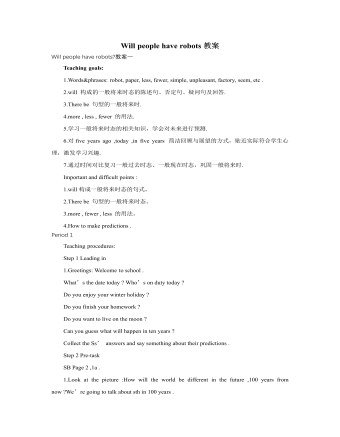
人教版新目标初中英语八年级下册Will people have robots教案
- 页数:26页
- |大小:231.50KB

人教版新目标初中英语八年级下册How long have you been collecting shells说课稿9篇
- 页数:43页
- |大小:263.00KB
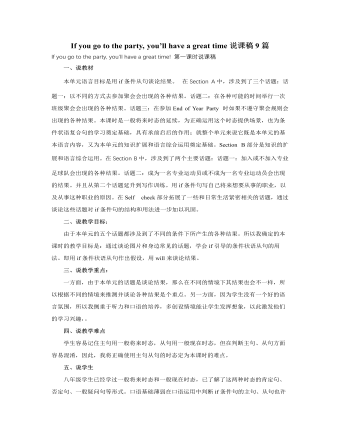
人教版新目标初中英语八年级下册If you go to the party, you’ll have a great time说课稿9篇
- 页数:32页
- |大小:189.50KB
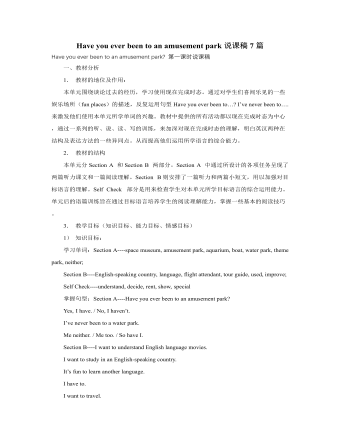
人教版新目标初中英语八年级下册Have you ever been to an amusement park说课稿7篇
- 页数:40页
- |大小:276.00KB
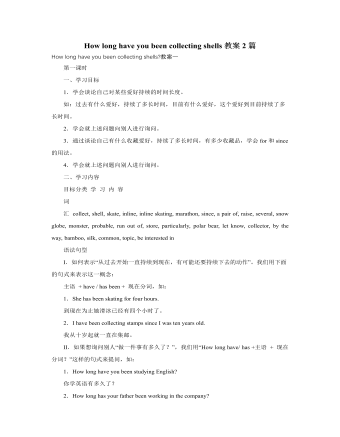
人教版新目标初中英语八年级下册How long have you been collecting shells教案2篇
- 页数:33页
- |大小:183.00KB
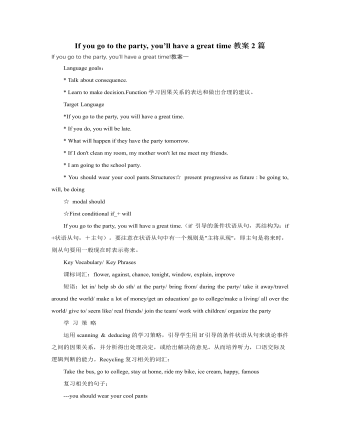
人教版新目标初中英语八年级下册If you go to the party, you’ll have a great time教案2篇
- 页数:25页
- |大小:200.00KB
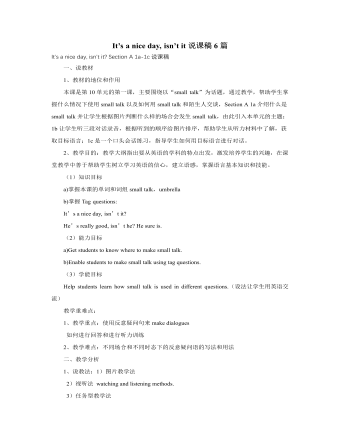
人教版新目标初中英语八年级下册It’s a nice day, isn’t it说课稿6篇
- 页数:23页
- |大小:130.00KB
热门说课稿

北师大版初中八年级数学上册三角形内角和定理说课稿2篇
- 页数:6页
- |大小:60.50KB
- 说课稿
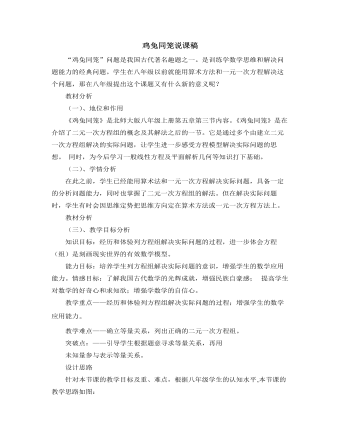
北师大版初中八年级数学上册鸡兔同笼说课稿
- 页数:4页
- |大小:62.50KB
- 说课稿
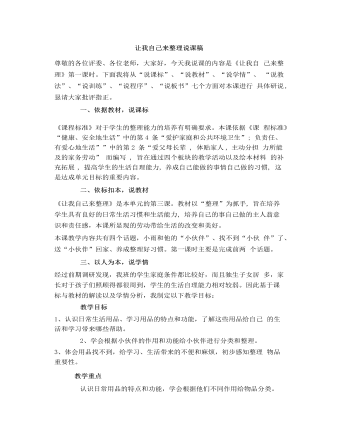
人教部编版道德与法制二年级上册家乡物产养育我说课稿
- 页数:4页
- |大小:29.21KB
- 说课稿
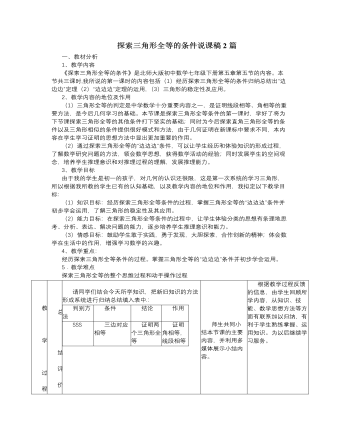
北师大版初中七年级数学下册探索三角形全等的条件说课稿2篇
- 页数:10页
- |大小:110.50KB
- 说课稿
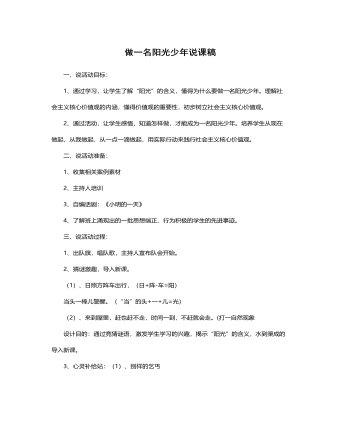
做一名阳光少年说课稿
- 页数:4页
- |大小:24.83KB
- 说课稿
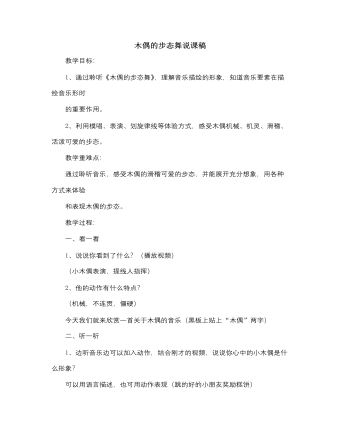
人音版小学音乐三年级下册木偶的步态舞说课稿
- 页数:4页
- |大小:34.00KB
- 说课稿
今日更新
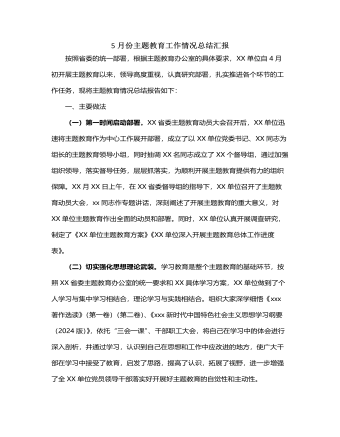
5月份主题教育工作情况总结汇报
- 页数:3页
- |大小:136.87KB

××县招商局2024年上半年工作总结
- 页数:12页
- |大小:142.54KB
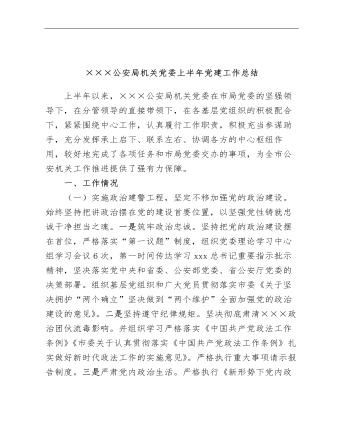
×××公安局机关党委上半年党建工作总结
- 页数:7页
- |大小:186.25KB

《2019—2024年全国党政领导班子建设规划纲要》实施情况的工作总结3800字
- 页数:6页
- |大小:29.16KB
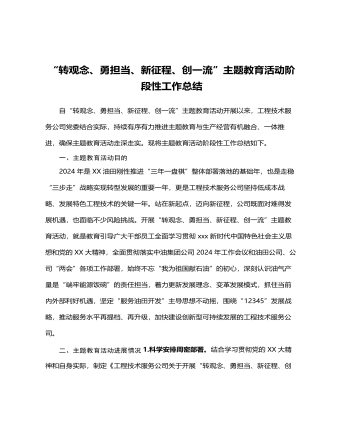
“转观念、勇担当、新征程、创一流”主题教育活动阶段性工作总结
- 页数:3页
- |大小:22.76KB

“四零”承诺服务创建工作总结
- 页数:5页
- |大小:39.83KB






